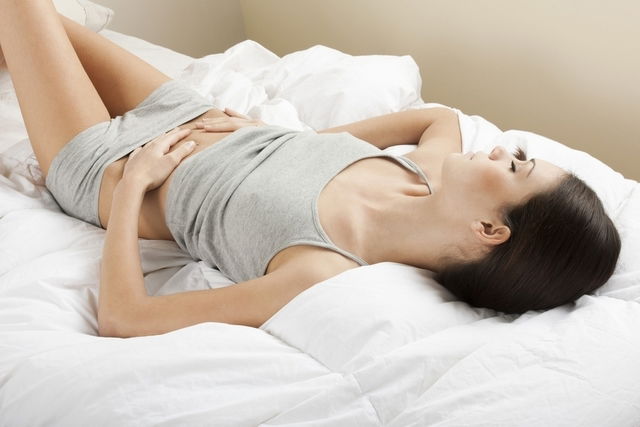PMS symptoms can include abdominal pain, bloating, increased appetite, back pain, difficulty concentration, water retention, increased breast sensitivity, acne and headache. These symptoms can vary from woman to woman, and may present more intense in some women than others.
Symptoms of PMS usually emerge 5 to 10 days prior to menstruation and become more intense until a period starts. It is possible to experience more than one symptom at the same time.
PMS symptoms occur due to fluctuations in hormone levels that commonly occur during this time. It is important to consult a gynecologist regarding symptoms that are intense and interfere with activities of daily living.

Main symptoms
The most common symptoms of PMS are:
- Abdominal pain or cramping
- Bloating
- Breast pain or sensitivity
- Nausea and vomiting
- Dizziness and fainting
- Constipation or diarrhea
- Acne
- Headaches or migraines
- Increased desire for sweets
- Insomnia or excess fatigue
- Increased emotional sensitivity
- Difficulty concentrating
- Irritability or restlessness
- Tension and anxiety
- Weight gain due to fluid retention
- Back pain, particularly in the lumbar region
Although they can be very uncomfortable, PMS symptoms can be relieved through regular physical activity and a healthy, balanced diet.
Intense PMS symptoms
The intensity of PMS symptoms can vary from woman to woman, and can range from mild to severe. In very severe cases, PMS symptoms can leave women incapacitated and affect day-to-day activities. This can lead to women losing interest in activities of daily living, missing works, making decision based on current emotions and reacting aggressively.
In these cases, it is important to consult a gynecologist to start appropriate treatment. These symptoms may be a sign of a condition called premenstrual dysphoric disorder, may may trigger anxiety attacks and depression.
PMS symptom checker
If you think you may have PMS, report your symptoms below to assess your risk:
Why symptoms emerge
PMS symptoms emerge due to an eventual fall in estrogen levels and an increase in progesterone, which occurs on around the 14th day of the cycle. This influences the levels of serotonin in the brain, which is a hormone responsible for managing mood and wellbeing.
At around the 26th day of the cycle, estrogen and progesterone levels are very low, which triggers a period to start. At around day 3 or 4 of a period, these hormones start to increase again, and PMS symptoms gradually start to disappear.
How to relieve PMS symptoms
PMS symptoms can be relieved (or managed) with simple measures, such as:
- Exercising regularly, like taking walking, swimming or cycling. Physical activity helps to release serotonin and endorphins, which increase wellbeing and relieve symptoms of anxiety, restlessness and irritability. Exercise helps to decrease fatigue, combat insomnia and fatigue, boosts concentration and improves intestinal functioning and circulation. This can help to treat constipation and bloating.
- Increasing fluid intake, being sure to drink at least 8 cups of water per day. This helps to reduce bloating and constipation, and keeps the body hydrated should you experience diarrhea.
- Increasing fiber intake by eating fruit, vegetables, and whole grains to help relieve constipation and keep you full, which reduces the urge to consume sweets. See our list of high-fiber foods that you can add to your daily diet.
- Consuming food with tryptophan, like bananas, cheese, and Brazilian nuts. These help to increase serotonin production, which is a neurotransmitter that is responsible for improving mood and wellbeing, which improve symptoms like a low mood, hunger and fatigue.
In addition, to reduce symptoms of PMS, you should avoid consuming foods or drinks with high levels of caffeine, salt or alcohol. These increase bloating and fluid retention, which can may you feel more uncomfortable. Check out other tips for getting rid of water retention.
